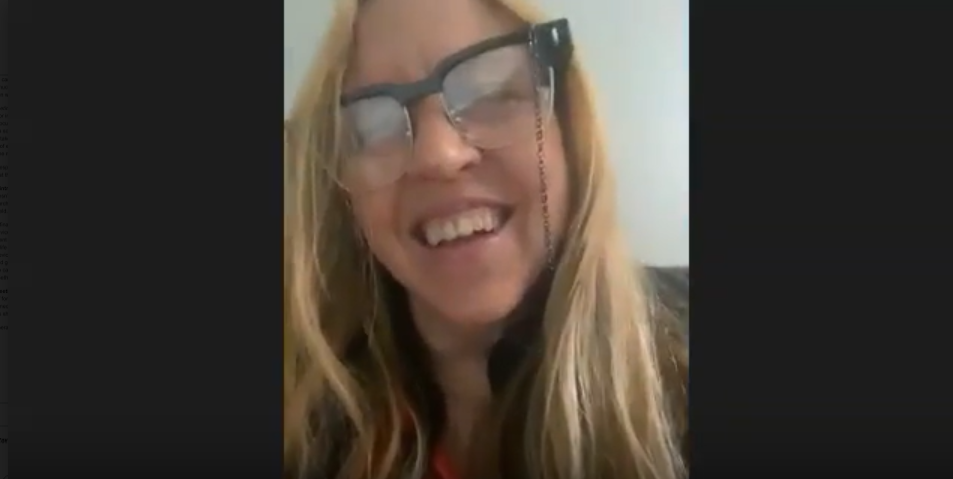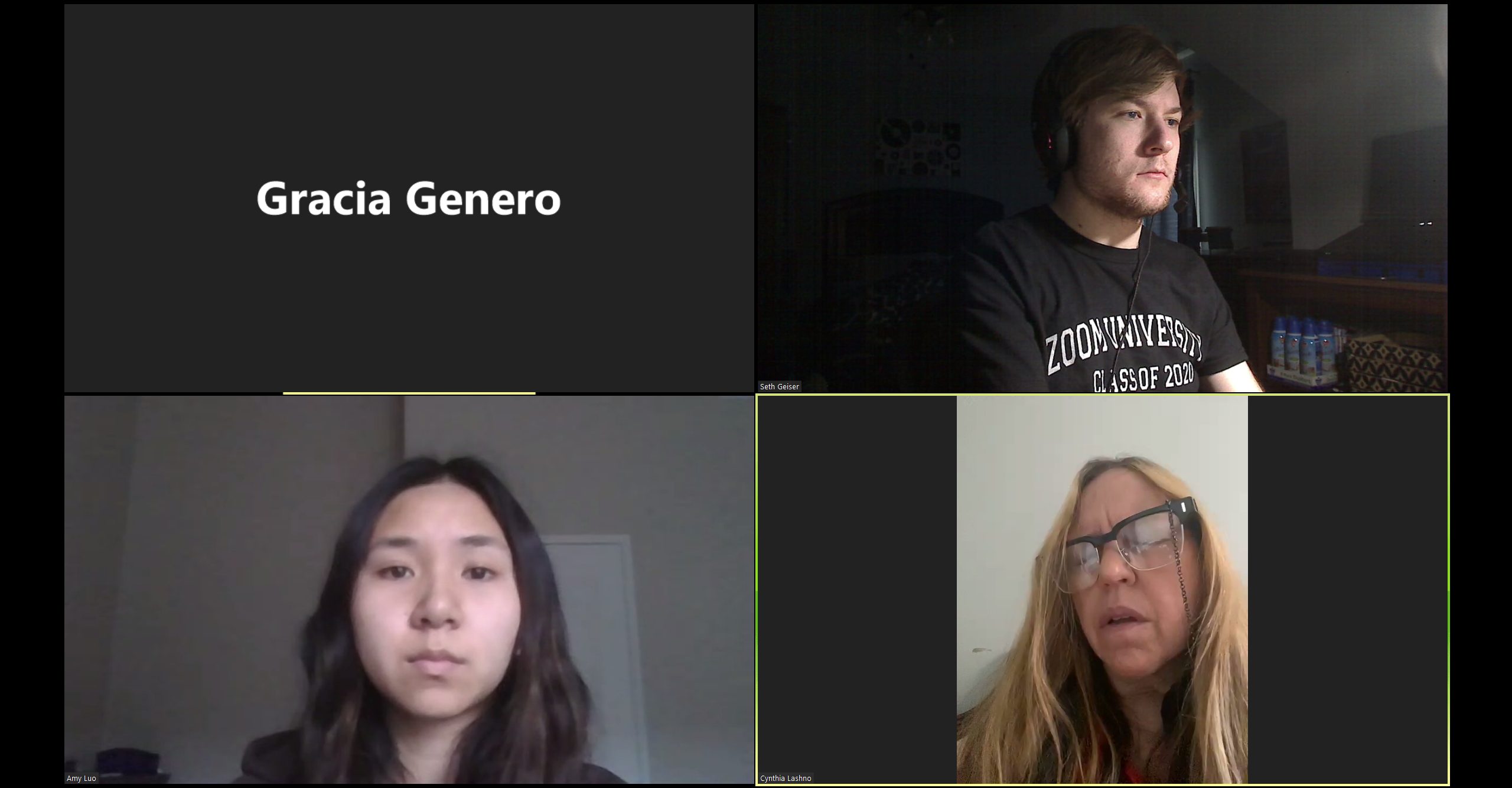Introduction
For our final project, our team was tasked with designing an assistive device for an older person. This device is meant to aid our client with their daily life in some form or another. We met with our client Cynthia via Zoom Call in order to ask her questions and gain better insight into her life as well as what daily problems she encounters which may be solved with a built physical device. The primary purpose of the meeting was to help identify various directions our project could go, and get some idea inspiration for what we might build for Cynthia. During the online video call, members present included our client Cynthia as well as the rest of our team: Gracia, Seth, and Amy. The Zoom meeting took place on Wednesday March 25th, 2020.
Meeting Agenda
The general outline for our interview:
-
- Self introductions – get to know each other more
- Explain the project and clarify expectations
- Ask Cynthia about daily tasks that she might have problems with or any activities in her daily life that are difficult, frustrating, or can be improved
- Ask Cynthia if she has something she enjoys doing, which has become harder with age. Are there creative ways to make that thing easier to do now?
Meeting Summary
Over the course of the meeting, we were able to learn more about Cynthia like where she likes to eat, her go-to drinks, and stories about her friends. More importantly, we were able to get a better understanding of her needs and the daily activities that we might be able to help her with. One of issues include her dog being particularly keen on chewing her sandals, but nothing else. We also learned a lot about the health book that Cynthia is currently working on.
Although she has finished writing most of it, she is having a hard time completing the project and going through the publishing and marketing process. She shares that one of the biggest hurdles in completing it is having a lack of motivation. She notices that it has been affecting her in the past few years and affects other parts of her daily activities. Additionally, she feels “scatterbrained” sometimes, which makes things like organizing books or clothes more difficult than previously to complete. It has also adversely affected her timeliness and punctuality in her personal life. She finds that she is often late to many things.
Since we couldn’t get to the root of what motivates Cynthia, it would be difficult to create a device that will make any significant positive impact on her motivation. We instead focused on what was within the scope of our abilities and talked about the possibilities of creating a device that can bring her back into focus and remind her of upcoming events. Another possibility we discussed is having some type of device to train her dog or prevent her dog from chewing on her sandals.

Cynthia on Zoom call with us, explaining her daily activities and potential problems our device could solve.

Screenshot from our group zoom call with Cynthia.
Reflection
The meeting didn’t quite follow the agenda to a T — there were times where we got off-topic. However, we were still able to obtain the relevant information needed in order for us to get an idea of the sort of device we will ultimately build. There were times where we would derail for a bit, but the pertinent information was still there. It was quite easy to connect with her at a more personal level because she was so open to discussing her own interests and whatnot, so once we got to discussing her daily needs and things she possibly struggles with, we were readily able to come up with a few ideas for attempting to mitigate these struggles.
Even with the occasional rambling, we all thought the meeting went fairly well. That said, there are things we could have done better. For instance, upon presenting an idea (such as the trainer for the dog to stop it chewing Cynthia’s shoes), it may have been helpful to explain how such a device may work or look. This would give Cynthia a better idea of what such a device may look like or work like even before a prototype is made, allowing her to provide input for what she wants in those regards.
Comments are closed.